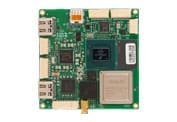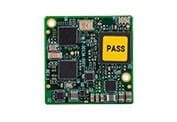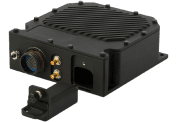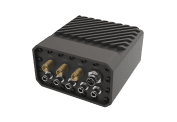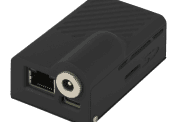Autonomous platforms are getting a transformational boost thanks to the latest technological advancements, such as enhanced sensors and improved data processing. The result is an AI dream: masses of real-time data is being accumulated from these unmanned vehicles, just ripe for algorithmic processing. However, these enormous amounts of data are turning out to be too much to handle for traditional or cloud computing architecture. Latency issues and bandwidth problems have seen the autonomous platform industry turn to edge computing as a solution.
What is edge computing?
Edge computing refers to the deployment of computing and storage resources at the location where the data is actually produced, as close to the originating source as possible. Rather than sending raw data to a central data center, the processing and analysis are instead performed where the data is generated – at the network edge — whether that’s a manufacturing facility, aerial drone, or military sea vessel. Once processed, only key insights or relevant data are then transmitted to the central data center for further analysis.
Why is Edge Computing Important for Unmanned Vehicles?
Edge computing delivers a significant advantage to unmanned platforms as it offers an effective solution to the latency, bandwidth, and network disruptions that occur when moving large volumes of data.
And these volumes are growing every day. With Gartner predicting that by 2025, 75% of enterprise-generated data will be created outside of centralized data centers, it’s not hard to understand how traditional infrastructure will quickly become overwhelmed.
For critical applications that rely on real-time data from unmanned platforms, such as HLS, military, and some commercial applications, edge computing is the future.
Benefits of Edge Computing for Unmanned Vehicles
1. Improved performance
When centralized data centers must push data out through the Internet to autonomous or semi-autonomous platforms, network bandwidth and latency issues can negatively affect speed and performance. Edge computing reduces many of the bottlenecks and costs related to slow Internet connections and loss of real-time data. When less data must flow back and forth between the cloud and the edge of the network, performance improves and costs are lowered.
2. Faster computing
By processing data at the physical location where it’s generated, insights can be gleaned faster and response times can be reduced. This speed is especially vital for unmanned vehicles with intermittent connectivity, including land, sea, air, and space platforms.
3. Support for AI/ML applications
Artificial intelligence and machine learning (AI/ML) applications process, analyze, and respond to vast amounts of data. Centralized data processing is not conducive to advanced AI and ML due to a lack of network latency and bandwidth. Edge computing eliminates this barrier and enables AI/ML applications to work their magic.
4. Enhanced security
The universal concern about the safety and security of data as it flows between the edge and the centralized data center is not unfounded. Edge computing allows data transmitted across the network to be encrypted while providing real-time threat detection at the edge of the network.
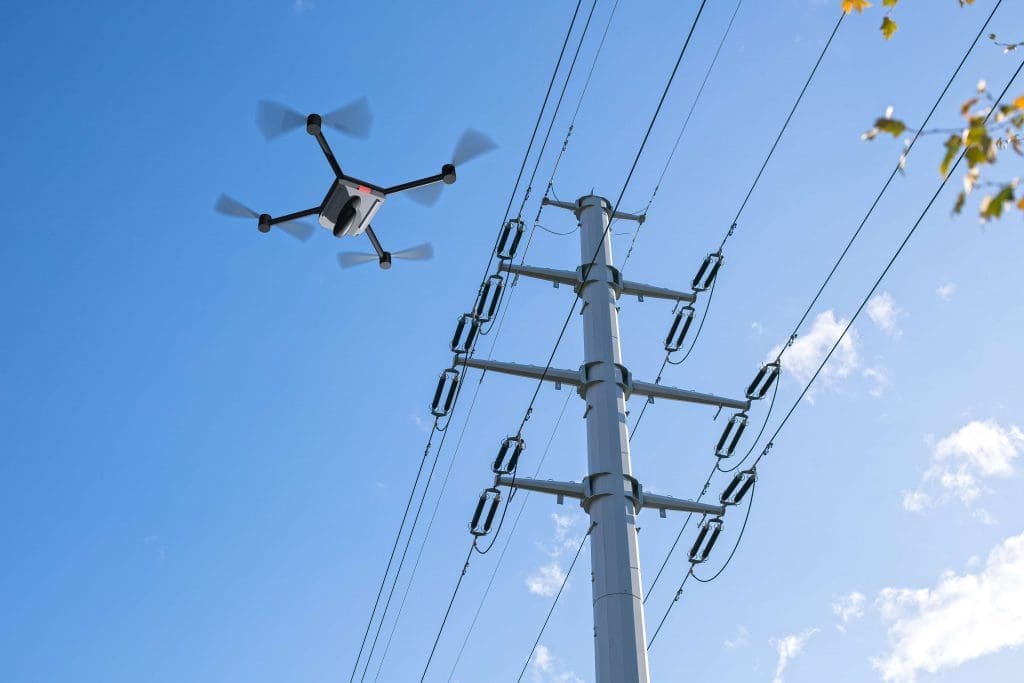
Use Cases: Edge Computing for Unmanned Vehicles
Edge computing is relevant across a wide range of industries. Some examples:
Commercial
As more and more industries discover the benefits of unmanned aerial vehicles (UAV), drones have emerged as a reliable tool for collecting unlimited aerial data and providing real-time visibility for a wide range of industrial and tactical applications. A recent report by Drone Industry Insights indicates that the top drone applications in 2022 are energy, construction, and agriculture. These industries can benefit from edge computing by collecting and analyzing data at the source. For example, when a drone conducts an aerial inspection of gas pipelines, smart onboard processing allows only relevant data to be transmitted to the central hub, such as any pipeline anomalies or areas that need further manual review. Other use cases involve predictive analytics that can guide precision agriculture or construction equipment maintenance and repair before failures occur.
HLS
Real-time situational awareness is an essential element of HLS security and protection systems. Police and emergency services are increasingly utilizing aerial cameras for a wide range of homeland security applications, including special events, law enforcement, crisis management, and the maintenance of public safety in urban environments. Edge computing allows governments to incorporate AI, ML, and the Internet of Things (IoT) to quickly identify and resolve public safety issues. For example, when aerial sensors are deployed for border surveillance, hours of video must be transmitted and processed to identify threats, a process that truly requires real-time performance. With edge computing, the processing is performed directly onboard the platform, ensuring safe borders at all times.
Military
Autonomous and semi-autonomous vehicles are a strategic part of many military missions, used for decoy, surveillance, and target acquisition. Edge computing can upgrade any small remote platform by enabling end-to-end low latency streaming, rich video processing, and analytics capabilities. For example, defense strategies require unmanned platforms to perform in an extended range indoors, outdoors, and in harsh environments. Data processing on the edge enables these unmanned vehicles to deliver reliable and continuous situational awareness in real-time, ensuring a competitive advantage on the modern battlefield.
Maris Advantage: Smart Video and AI at the Edge for Autonomous Remote Platforms
Maris develops and manufactures the smart onboard architecture that enables real-time and accurate video processing necessary for effective decision making, data analytics, and ultimately, mission success. Designed to integrate with land, sea, air, and space platforms, Maris’ compact and modular architecture is the field-proven solution of choice for accurate intelligence gathering and situational awareness for a wide range of applications.
All of Maris’ sophisticated solutions offer best-in-class SWaP, multiple streaming, high video quality, low latency, robust communication capabilities, and are highly modular and flexible. They are ideal for a range of applications, including commercial, HLS, and military applications.
For more information about how Maris’ Smart Video & AI at the Edge solutions can upgrade your drones, contact us at [email protected]

